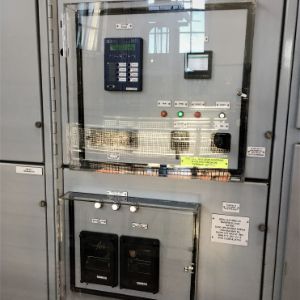Avoid These 10 Slip-Ups With Temporary Electrical Panel Guards
Temporary electrical panel guards, such as those offered by SmartGuard, are essential for maintaining safety on construction sites or during renovation projects nationwide. However, improper use can lead to hazardous situations and non-compliance with OSHA regulations, resulting in fines up to $13,653 per violation. Avoid these 10 common slip-ups with temporary electrical panel guards to ensure optimal safety and compliance.
- Neglecting OSHA Compliance
- Using Non-Durable Materials
- Incorrect Size Selection
- Poor Installation Practices
- Overlooking Site-Specific Hazards
- Ignoring Routine Inspections
- Disregarding Temporary Equipment Safety
- Failing To Educate Your Workers
- Not Documenting Safety Compliance
- Overlooking Updates In Safety Regulations
1. Neglecting OSHA Compliance
According to the Occupational Safety and Health Administration (OSHA), electrical hazards are among the top five leading causes of fatalities in the construction industry. One of the biggest mistakes you can make is not following OSHA regulations. OSHA-approved electric panel guards are designed to minimize electrical safety hazards and ensure construction site safety.
2. Using Non-Durable Materials
Using low-quality or non-durable materials can jeopardize electrical safety. Always choose electrical panel covers made from durable, high-quality materials to ensure long-lasting protection and integrity under rigorous conditions.
3. Incorrect Size Selection
Selecting temporary panel guards that don’t match the size of your electrical panels can create gaps and expose workers to risks. Accurate measurements are essential for proper installation and to avoid panel guard pitfalls.
4. Poor Installation Practices
Improper installation can nullify the effectiveness of even the best panel guards. Always follow manufacturer instructions and employ best practices for panel guard installation tips to ensure secure and effective protection.
5. Overlooking Site-Specific Hazards
Each construction site has unique hazards. Failing to assess and address site-specific electrical and construction site hazards can lead to accidents. Conduct thorough site inspections to tailor your temporary guard solutions. Once these hazards are identified, it becomes easier to customize and implement tailored temporary guard solutions, ensuring the safety and compliance of your construction site.
6. Ignoring Routine Inspections
Skipping regular inspections can result in unnoticed wear and tear, compromising the safety of your electrical panel guards. Regularly check and maintain your guards to ensure ongoing electrical panel protection.
7. Disregarding Temporary Equipment Safety
Temporary electrical panel guards are an integral component of a comprehensive safety ecosystem on any job site. While these guards are essential for protecting electrical panels and preventing accidental contact, it is important to remember that safety measures should not end there. Overlooking the safety of other temporary equipment, such as wiring, conduits, scaffolding, and machinery, can introduce additional hazards that compromise the overall security of your work environment.
8. Failing To Educate Your Workers
Workers need to understand how to handle and work around temporary panel guards properly. Comprehensive employee training in both the installation of panel guards and adherence to safety protocols is crucial to prevent accidents and ensure compliance with industry regulations. This training should cover step-by-step installation tips, including the use of appropriate personal protective equipment (PPE) and the necessary safety checks.
9. Not Documenting Safety Compliance
Failure to document your safety measures can result in compliance issues. Keep thorough records of all safety procedures, installations, and inspections to demonstrate your adherence to electrical panel safety guidelines. By doing so, you demonstrate your adherence to established electrical panel safety guidelines and ensure you are prepared for any OSHA audits or inspections.
10. Overlooking Updates In Safety Regulations
Safety regulations and best practices evolve. Staying informed about the latest OSHA regulations and industry standards is important to ensure your temporary electrical panel guards comply with current guidelines. Regularly reviewing updates and implementing changes as needed will keep you ahead of potential hazards and regulatory issues, thereby ensuring a safe and efficient working environment.
Avoid Common Mistakes With SmartGuard’s Trusted Solutions
Enhance your construction site safety with SmartGuard’s reliable electrical panel covers. Our products are designed for durability, compliance, and ease of use, helping you avoid panel guard pitfalls. Equip your project with the best to ensure maximum protection nationwide. Visit our website to explore our range of OSHA-approved solutions and safeguard your workplace today.

